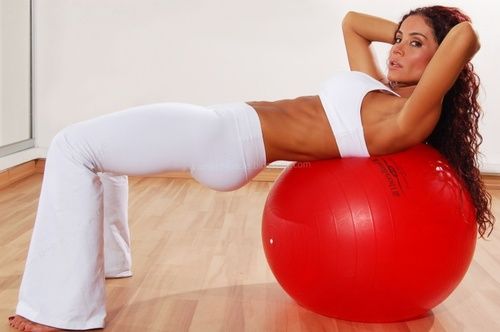
In today’s PT Intel personal trainer Kathleen Trotter talks about effective strategies to exercise with osteoarthritis. Besides being a personal trainer, Kathleen lives her advice, having completed 10 (count ’em!) marathons, an Ironman (well, Ironwoman to be more accurate) and 7 half Ironmans. You can also find her on Twitter.
With osteoarthritis, the phrase “use it or lose it” is particularly applicable. Exercise (when done right), can be an effective way to help minimize the pain associated with the condition. When you move your joints, you stimulate the production of synovial fluid, our bodies natural joint liner. The more synovial fluid you produce, the more lubricated your joints will be.
When you have osteoarthritis, you need all the synovial fluid you can produce because, osteoarthritis is due to a gradual loss of the connective tissue – cartilage – that acts like a shock absorber, and prevents your bones from rubbing against each other. As we lose cartilage, our bones do not glide as smoothly. When the loss of cartilage becomes extreme, the eventual result is that the bones within the affected joint rub directly against each other.
There are certain things you want to keep in mind when putting together a safe exercise program.
Things to include:
- Exercises that promote motion in your joints
- A thorough warm up. Aim for a minimum of ten to fifteen minutes of gentle activity.
- Exercises that promote balance, core control and proper posture.
Things to stay away from:
1. Isometric exercises, like low static squats or front and side planks. An isometric exercise is one where you are required to hold a position, they are not ideal because they reduce blood flow to the muscles surrounding the static joint.
2. High impact activity. Instead, do low impact activity. Always have one foot touching the ground at all times. For example, instead of doing jumping jacks, do alternating side toe taps with an arm reach.
3. Over stretching, or exercises that require extreme joint motions. Eliminate intense yoga classes from your workout program, or at least be very careful participating in such classes. Do not stretch to your ultimate limits, make sure that you inquire if the instructor has experience teaching people with osteoarthritis.
4. Do not work through pain, inflammation or swelling.
Recommended Reading
Hyperbolic Stretching – An Athlete’s Full Review. Curious about Hyperbolic Stretching and whether it delivers on the hype? Check out my full review of Hyperbolic Stretching and see for yourself how effective this program can be.